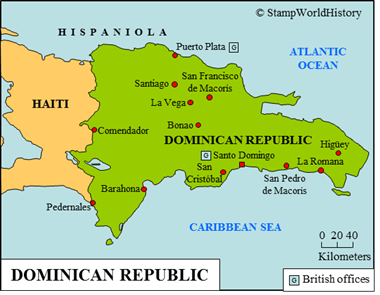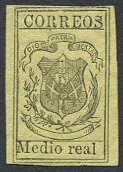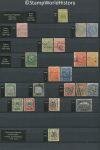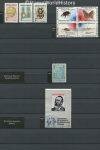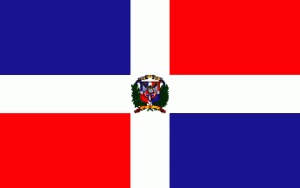
Dominican Republic
Quick reference
General issues: Republic 1865-1916, United States military administration 1916-1924, Republic 1924-Present
Country name on general issues: None, Republica Dominicana
Currency: 1 Peso = 8 Reales = 100 Centavos 1865-1880, 1 Peso = 5 Francos = 500 Centavos 1880-1883, 1 Franco = 100 Centimos 1883-1885, 1 Peso = 100 Centavos 1885-Present
Population: 600 000 in 1900, 10 478 000 in 2015
Political history Dominican Republic
Colonization and the road to independence
The Dominican Republic is located in the Caribbean on the island of Hispaniola, one of the Greater Antilles. Prior to colonization, Hispaniola was inhabited by the Taino, an Ameridian people found on many of the islands in the Caribbean. The first European to explore Hispaniola was Christopher Columbus in 1492. Hispaniola was first settled by the Spanish in 1496 when Santo Domingo was founded – the first permanent European settlement in the Americas. In the early days of colonization, Santo Domingo – the colony was named Santo Domingo after its capital – was the staging ground for the further exploration and conquest of Central and South America. Once the Viceroyalties of New Spain and Peru were formed, Santo Domingo lost importance. In the 17th century the French settled on the island and gradually extended their influence. In 1697, Spain ceded the western part of Santo Domingo to France. The French established the colony of Saint Domingue that would gain independence as Haiti in 1804. In 1795, Spain also ceded the remaining eastern part of Santo Domingo to France. In subsequent years, Santo Domingo went through a series of changes in rapid succession: the colony reverted to Spain in 1808, gained independence in 1821, was annexed by Haiti in 1822 and, finally, gained independence as the Dominican Republic in 1844. The border with Haiti was disputed until 1935.
The late 19th and early 20th centuries
Independence did not bring stability. Two major factions contested power in the capital while caudillos – local strongmen – had de facto control of parts of the countryside. In 1861, the Dominican Republic, by its own choice, reverted to Spain. The renewed colonial status would last only to 1865, when independence was once again gained. Political stability was reached, in the 1880’s, with the dictatorship of Ulises Heureaux. When Heureaux was assassinated in 1899, political infighting resumed. By then the Dominican Republic had accrued large foreign debts. A number of European countries threatened with military action to secure repayment of the loans. To forestall a European intervention, the United States intervened – first in 1903 and again in 1904. In 1905, an agreement was signed, giving the United States control over the finances of the Dominican Republic. The agreement – making the Dominican Republic a de facto United States protectorate – would last until 1941. In 1916, the United States intervened again, this time occupying the Dominican Republic. A United States military administration was established that governed the country until 1924. In 1922, a provisional president was appointed to prepare for elections that were held in 1924.
From the mid 20th century until today
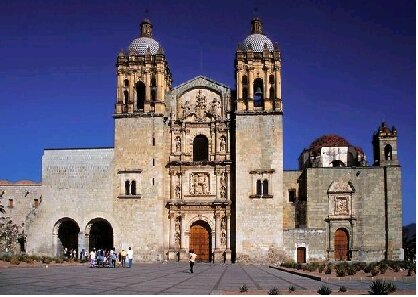
Santo Domingo is the oldest permanent European settlement in the Americas. The cathedral of Santo Domingo is the oldest cathedral in the New World. It was built between 1521 and 1540.
In 1930, Rafael Trujillo came to power. Trujillo would rule the Dominican Republic until 1961. His rule brought significant investments in the economy and in social institutions, such as health care and education. However, also large scale repression. Trujillo renamed the capital Santo Domingo to ‘Ciudad Trujillo'[1]‘City of Trujillo’ . After Trujillo was assassinated in 1961, political tensions rapidly increased, bringing the country to a state of civil war. In 1965, the United States, once more, intervened – now supported by the OAS, the Organization of American States. Elections were prepared under OAS supervision, and in 1966 Joaquín Balaguer was elected president. The OAS, subsequently, withdrew its forces. Balaguer would be president between 1966 and 1978 and again between 1986 and 1996 – leading the country in an autocratic style. From 1996, candidates from different parties have gained the presidency through free – although sometimes disputed – elections.
Economy and demographics
Economically, in colonial times, the Dominican Republic had been developed as a plantations colony, exporting sugar, coffee, and tobacco. In the 20th century the economy was diversified and services have become the most important sector. Currently, the Dominican Republic is qualified as an upper middle income developed country. The population consists of 73% people of mixed descent, 16% whites and 11% blacks. Since the 1960’s, large numbers of Dominicans have emigrated – in 2012 an estimated 1.7 million Dominicans lived in the United States.
Postal history Dominican Republic
The first stamps used in the Dominican Republic were the issues of the Spanish West Indies – used also in Cuba and Puerto Rico – between 1861 and 1865 when the Dominican Republic had reverted to Spain as the colony of Santo Domingo. Having regained independence, the Dominican Republic issued its first stamps in 1865. This first issue, and subsequent issues until 1879, were used for domestic mail and were not inscribed with the country name. The first issue to carry the country’s name appeared in 1880, just before the Dominican Republic joined the UPU in 1881. Under United States military administration, stamps continued to be issued by the Dominican postal administration – no special issues appeared. From the classical era until today, the Dominican Republic has issued stamps mainly with themes of national interest.
British offices operated in Santo Domingo and Puerto Plata between 1866 and 1881, using the general issues of Great Britain. These offices handled foreign mail until the Dominican Republic joined the UPU in 1881.
Album pages
← Previous page: DominicaNext page: Ecuador →

